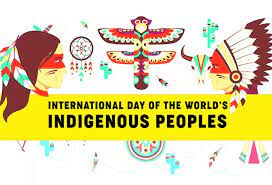
International Day Of The World’s Indigenous Peoples 2023: Date, theme, Significance and History– Every year on August 9, the United Nations (UN) observes International Day of the World’s Indigenous People to promote and safeguard the rights of the world’s Indigenous population. Also known as World Tribal Day, this event also recognises the achievements and contributions that Indigenous people make to improve world issues such as environmental protection.
Daily Current Affairs Quiz: August 2023
Theme of International Day of the World’s Indigenous Peoples
This year’s theme is: Indigenous Youth as Agents of Change for Self-determination.
- Climate Action and the Green Transition
- Mobilizing for Justice
- Intergenerational connections
Significance of International Day of the World’s Indigenous Peoples
Indigenous and tribal cultures, and communities, allow us to look back at our roots. Taking cognisance of the knowledge acquired by indigenous people is vital culturally and also scientifically. Ancient cultures had perfected their survival strategies over centuries and discovered remedies to ailments which have helped modern scientists tremendously. Aside from science, understanding and preserving indigenous languages, spiritual practises, and philosophies is vital.
History of International Day of the World’s Indigenous Peoples
In December 1994, the United Nations General Assembly decided that the International Day of the World’s Indigenous Peoples should be observed on August 9th each year. The date was chosen in recognition of the first meeting of the UN Working Group on Indigenous Populations of the Sub-Commission on the Promotion and Protection of Human Rights held in Geneva in 1982. The day is necessary since indigenous peoples are frequently among the poorest ethnic groups in society around the world. According to the United Nations, indigenous people make up less than 5% of the world’s population yet account for 15% of the poorest. They speak an overwhelming majority of the world’s estimated 7,000 languages and represent 5,000 different cultures.





